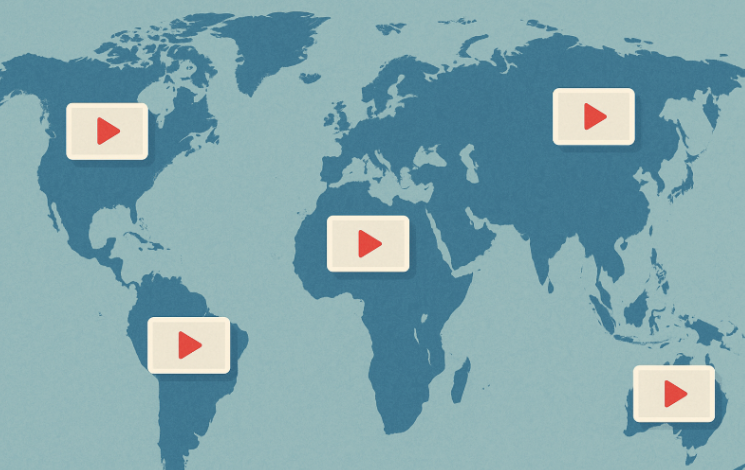Video Ads Across Cultures: How Global Brands Adapt Messaging

In the age of global marketing, a video ad that kills it in New York may flop spectacularly in Tokyo. What works in one market may be irrelevant, confusing, or even offensive in another. Global brands face the challenge of crafting video ads that resonate with diverse audiences while staying true to their core message.In this article, we explore why a single ad does not fit all markets, the importance of cultural sensitivity in visuals, humor, and language, examples of campaigns that failed spectacularly, how AI assists in translation and cultural adaptation, and strategies for future-proofing global video ads.
Why One Ad Doesn’t Fit All Markets
At first glance, it might seem efficient to create one video ad and distribute it worldwide. After all, it saves time, money, and production effort. But audiences are shaped by culture, values, and communication styles, and these differences can make or break a campaign.
For instance, humor that resonates in the United States might fall flat in Germany or South Korea. Colors carry different meanings across cultures, and even simple gestures or symbols can convey unintended messages. A campaign that fails to account for local norms risks alienating audiences or, worse, generating negative publicity.
Global marketers must recognize that one-size-fits-all video ads rarely succeed. The more brands understand their audience, the better they can tailor messaging, visuals, and tone for each market.
See also: The Rise of Age Verification Technology: Protecting Digital Spaces in a Connected World
Cultural Sensitivity in Visuals, Humor, and Language
Adapting video ads for global audiences requires careful consideration of three key elements: visuals, humor, and language.
1. Visuals
Colors, symbols, and imagery carry cultural significance. For example, white symbolizes purity in Western countries but can represent mourning in some Asian cultures. Hand gestures, facial expressions, and even the setting of a scene can influence how the ad is perceived.
2. Humor
Humor is notoriously culture-specific. What makes one audience laugh may confuse or offend another. Puns, wordplay, and sarcasm often lose their effect in translation. Marketers must test humor carefully and consider cultural norms to avoid misinterpretation.
3. Language
Direct translation is rarely enough. Local idioms, slang, and context matter. A poorly translated tagline can turn a clever message into a confusing or embarrassing statement. This is where professional localization and AI-assisted translation come into play, allowing brands to maintain the original message while adapting it culturally.
By paying attention to these three elements, marketers can create video ads that resonate across borders without diluting brand identity.
Case Studies of Failed Campaigns
Some global brands have learned cultural lessons the hard way. Here are a few examples:
1. Pepsi’s “Live for Now” Campaign
Pepsi released an ad that featured a celebrity handing a soda to a police officer during a protest. While intended to convey unity, the campaign was widely criticized in the U.S. for trivializing serious social issues. Adapting messaging to cultural sensitivity would have avoided backlash.
2. Chevrolet’s Launch in China
Chevrolet introduced the “Nova” car in Spanish-speaking countries, not realizing that “Nova” roughly translates to “doesn’t go” in Spanish. While not intended for China, this shows how naming and messaging can fail without cultural insight.
3. Dolce & Gabbana in China
A series of ads featuring awkward cultural references and stereotypical depictions sparked outrage and boycotts in China. Despite the brand’s global fame, the ad failed because it overlooked cultural nuance and local perception.
These examples highlight the importance of research, local insights, and cultural adaptation when creating video ads for international markets.
AI-Assisted Translation and Cultural Adaptation
Modern technology, especially AI ad creators like Quickads, is making it easier for brands to navigate cultural complexity. AI tools can help in multiple ways:
1. Accurate Translation
AI can quickly translate scripts, captions, and text overlays into multiple languages while preserving context and tone. Unlike basic machine translation, AI tools can suggest culturally appropriate phrasing.
2. Visual Adaptation
AI can recommend edits for colors, symbols, or imagery to ensure visuals are culturally sensitive. Brands can swap out elements that may not resonate with a particular audience without reshooting the entire ad.
3. Testing and Optimization
AI can generate multiple variations of a video ad for different markets and test them in real time. Metrics such as engagement, click-through, and sentiment analysis help marketers choose the most effective version.
4. Efficiency at Scale
Global campaigns can involve dozens of markets, making manual adaptation costly and time-consuming. AI-powered tools streamline production, localization, and optimization, allowing brands to reach multiple regions efficiently.
By leveraging AI ad creators, marketers can produce culturally adapted video ads at scale without compromising quality or relevance.
Future-Proofing Global Ads

As global audiences become more connected and diverse, brands must anticipate changes in cultural trends and digital behavior. Here are some strategies to future-proof video ads:
- Invest in Cultural Research: Stay updated on local trends, values, and sensitivities. Understand what resonates and what might offend.
- Embrace AI and Automation: Use AI to scale localization, test variations, and analyze performance across markets.
- Focus on Universal Themes: While adapting for local culture, also identify universal values like happiness, trust, and innovation that transcend borders.
- Iterate Continuously: Markets evolve quickly. Regularly update video ads based on feedback, analytics, and cultural insights.
- Collaborate Locally: Work with local teams or influencers who understand the nuances of the target audience and can provide valuable input for video content.
By combining cultural insight, AI-powered tools, and flexible strategies, brands can create global video campaigns that are relevant, engaging, and future-ready.
Conclusion
Video ads are one of the most powerful tools for global marketing, but they are not plug-and-play. A campaign that resonates in one country may fall flat or even backfire in another. Success requires cultural sensitivity in visuals, humor, and language, careful research, and a willingness to adapt.
AI ad creators like Quickads make this process easier by enabling accurate translation, visual adaptation, testing, and optimization at scale. By leveraging AI, brands can maintain their creative vision while ensuring relevance across multiple markets.
The key takeaways for marketers are:
- One-size-fits-all video ads rarely work globally.
- Cultural sensitivity in visuals, humor, and language is essential.
- Learn from past campaign failures to avoid costly mistakes.
- AI tools can streamline translation, adaptation, and testing.
- Future-proof your campaigns with research, iteration, and local collaboration.
In a world where audiences are diverse and expectations are high, global brands that adapt their video ads thoughtfully will capture attention, build trust, and drive results. Cultural awareness is not just a nice-to-have; it is a competitive advantage in global advertising.
With the right strategy, creativity, and AI-powered tools, global marketers can create video ads that connect meaningfully with audiences everywhere, turning cultural complexity into an opportunity for engagement and growth.



